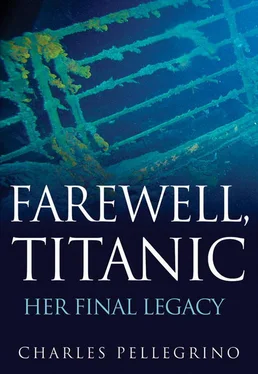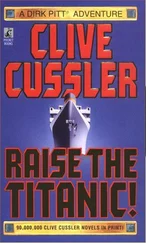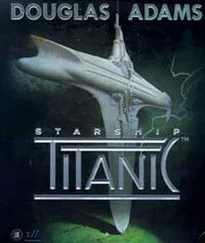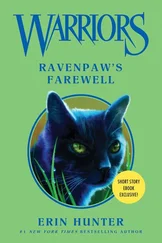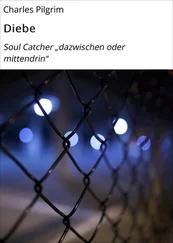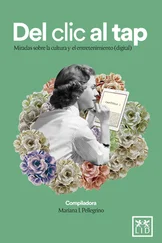I wrote Her Name, Titanic in 1987 and resolved never to return to this subject again. At the end of the Ballard Era of Titanic exploration, in 1986, the ship had begun to emerge from the shadows of legend, gaining color and texture. The George Tulloch era of Titanic exploration began to resolve increasingly clearer images of what happened that night. The Titanic had become like a fractal equation: open the door to one question and your answers opened the doors to ten new questions. By the time Tulloch recovered the letters and diaries preserved in Howard Irwin’s steamer trunk, revealing the story of a penniless world-wanderer who lived much like the Jack Dawson character in James Cameron’s Titanic, I was hooked. No one who has seen the ship and said they were finished with it has ever been able to keep that vow; its mystique has a way of biting into a person and never letting go. Though I had said I was finished with the Titanic , I was already mainlining forensic archaeology.
Tulloch’s French-American era of Titanic exploration became the subject of the second book in my trilogy, Ghosts of the Titanic . This artifact recovery period all but created the fields of forensic archaeology and bio-archaeology. The Russian-American-Canadian era (the Cameron era of Titanic exploration, and the subject of this book) began in 1995 with the deep-penetrating bot Snoop Dog, followed in subsequent years by a fleet of progressively smaller and more agile bots with names like Jake, Elwood, and Gilligan.
These bots have allowed us to penetrate deeper than ever before, into the rooms and the lives of Titanic’ s people—from Edith Russell’s stateroom through Maude Slocomb’s Turkish baths, through the pantry areas, the firemen’s quarters, and the previously ignored third class areas. Along the way, we have discovered postal workers’ desks completely intact, in rooms inhabited by animals so strange that it sometimes took us years to fit them into phyla. We found great quantities of decorative wood in near perfect states of preservation and confirmed that what seventeen-year-old Jack Thayer saw rising near him as the bow submerged really was the multistory wooden structure of the Grand Stairway, floating up through the Crystal Dome.
We also discovered that due to the accelerating growth of the Titanic’ s rusticle (“icicles” of rust) reef, the ship is becoming a house of cards avalanching section by section, year by year before our eyes. Though the Titanic is vanishing, I would never make a gross claim that forensic archaeology is finished on that deep-ocean prairie or that this is the last word on an unsinkable subject. This is merely the last book that could be written while survivors and at least some of their immediate family members were still alive and able to contribute details.
Among the people whose stories surface in this book—dovetailing with archaeology for the first time—are a Japanese efficiency expert falsely accused of getting past the women-and-children-first rule by entering a lifeboat dressed as a woman. You will meet a thirteen-year-old take-charge girl who saved her deaf mother and who spent seven of her last years as a sworn enemy of historian Walter Lord over an incident involving Charles Lightoller’s whistle. Stewardess Maude Slocomb describes the terrible condition in which she found the Turkish baths, which were discovered in 2005 appearing almost as shiny and new as Maude had last seen them after she finished her repairs. A gateway to the lifeboats is still locked against third class. The story of a Chinese sailor found floating on a piece of wreckage might never have been told at all if a child and her mother had not cried out after Fifth Officer Harold G. Lowe, once he realized the survivor was a nonwhite, ordered his rowers to abandon him.
Most people know the stories of passengers in the luxurious first class regions of the ship. This is the first book that turns most of its focus away from the gilded regions of the Titanic toward the engineers, the Mediterranean passengers, and the successful nonwhites who were not permitted to purchase first-class tickets—including the largely unknown existence of an interracial couple aboard.
In addition to accounts from survivors and their families, forensic archaeological observations, including a census of open portholes, have been carefully cross-referenced with the American and British inquiries into the loss of the Titanic (which are generally referenced in this book under the heading “The Examination”) to resolve such issues as the extent to which open portholes and Lightoller’s open D-deck gangway door quickened the rate of the Titanic’ s sinking.
Among the stories told for the first time in this book are the events that followed after we surfaced from the Titanic onto a Russian support ship, as the terrorist attacks of September 11, 2001, were about to commence. During the days that followed, while living through the inverse of what people in New York City experienced in 1912—awaiting word about missing family members, at the Titanic —I learned that not all of my family had survived in New York, while Russians and Americans helped me to prepare for my next job: applying the same physics I had been studying at the Titanic at ground zero.
This is also the first book to reveal something always discussed behind the scenes: how the explorers felt the presence of the people on the Titanic (often called “the quiet voices”), especially at the Titanic’ s stern section. A widespread recurrence of this phenomenon has been experienced in the ruins of the World Trade Center.
One need not wonder about ghosts of the imagination to be drawn irresistibly into the mystique of the Titanic . The interconnected rusticle reef has turned the Titanic ’s entire bow section into one of the largest and most intriguing organisms on Earth. The reef is also a timely warning: rusticle growth bands are a repository of year-by-year changes in the acidity and health of the oceans.
The changes being recorded from the Mediterranean to the deep Atlantic seem to be forcing us to recall survivor Eva Hart’s last warning: that humans might be capable of repeating the futility of the Titanic ’s final hours on a global scale. Hart knew how the statue builders of Easter Island had found a tropical paradise, yet by the year 1500 they made a desert of it. Surely, some doomed tribal elder must have warned against cutting down the last stand of healthy trees.
In the end, the story of the Titanic is as much about the future as about the past—warning us why there is no shortage of lost ships, lost cities, and lost civilizations for archaeologists to explore.
—Written at St. Paul’s Chapel, New York City, August 8, 2011
First and foremost, as always, I thank John and Jane Pellegrino, Adelle Dobie, and Barbara and Dennis Harris. For conversations and information, lively debate, and even occasionally sharing adventures on the high seas (and deep under them), I thank Walter Lord, Bill MacQuitty, John Maxtone-Graham, and the Titanic families of Daisy Speddon, Frank Goldsmith, Helen Candee, Emily Badman, and Thomas Andrews. I thank survivors Frank Aks, Michel Navatril, Ellen-Betty “Marshall” Walker and her friend John Hodges, Eva Hart, Louise Pope, Marjorie Newell Robb, and Millvina Dean.
In the fields of primordial biology and astrobiology—which, by accident, led me to the Titanic and whose fields of study have resonated through the Titanic expeditions—I thank Harold C. Urey, Bartholomew Nagy, Claire Edwin Folsome, Francis Crick, Cyril Ponnamperuma, Sir Charles Fleming, James Powell, and Jesse A. Stoff. Astrobiology at the Titanic continued with Roy Cullimore and Lori Johnston, and later with Mark Newman. I am grateful to James Cameron, John-David Cameron, Rich Robles, Mike Cameron, Ken Marschall, Don Lynch, Ralph White, John Broadwater, Lewis Abernathy, Parks Stephenson, John Bruno, Ed Marsh, Bill Paxton, Charlie Arneson, Anthony El-Khouri, Takashi (Thomas) Tanemori, Sir Arthur C. Clarke, Father Mervyn Fernando, Holly McClure, George Zebrowski, and Pamela Sargent. I thank Georgyj M. Vinogradov, Lev, Lydia, Anatoly Sagalevitch, Victor Nescheta, Genya Cherniev, Barbara M. Medlin, Glen Singleman, and the entire crew of the good ship Keldysh (Ohana). I am also indebted to George Tulloch, Matt Tulloch, Paul Henry Nargeolet, William Garske, Paul J. Quinn, Barbara and Dave Shuttle (Dave is a descendant of Pearl Shuttle’s family), Bill Schutt (and Janet and Billy), Steve Sittenreich, and Frances Kakugawa, Hideo Nakamura, Hidetaka Inazuka, and Kae Matsumoto (regarding Masabumi Hosono’s family).
Читать дальше
